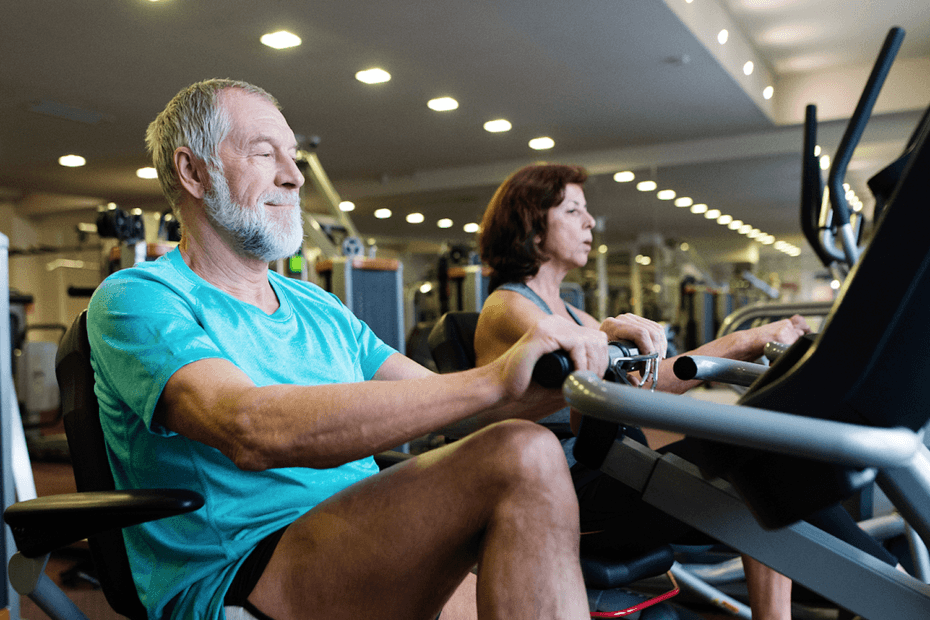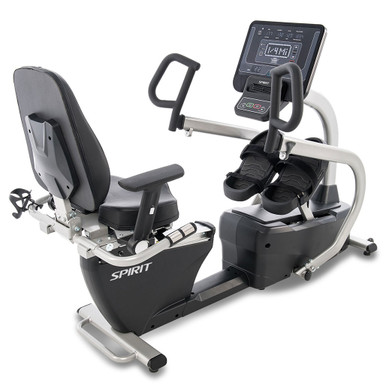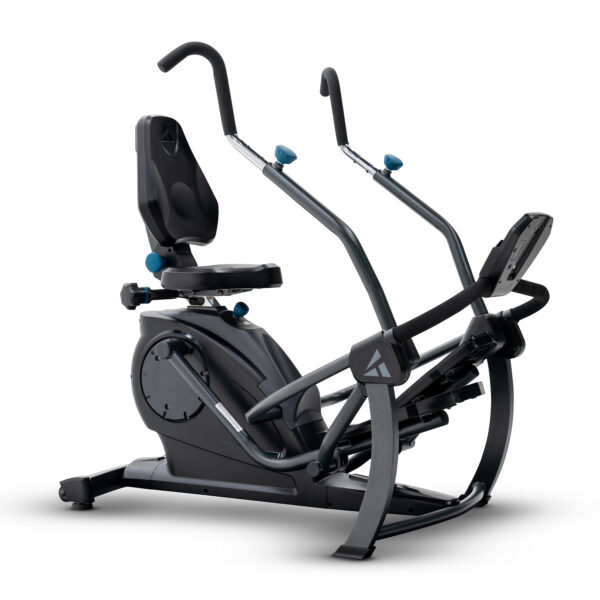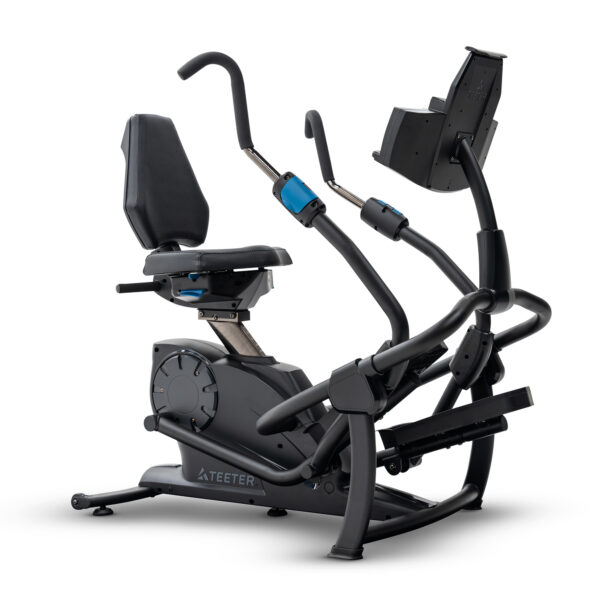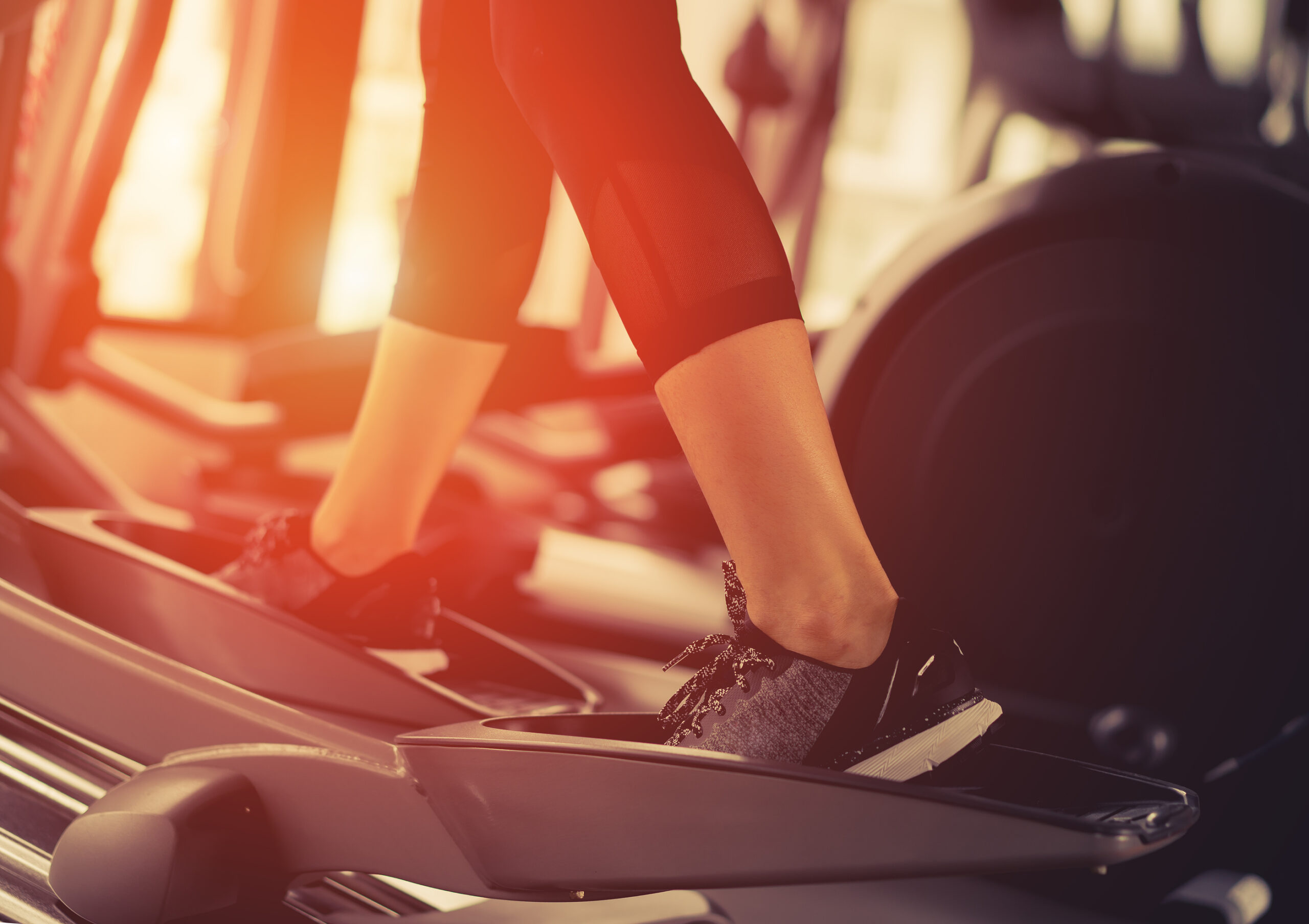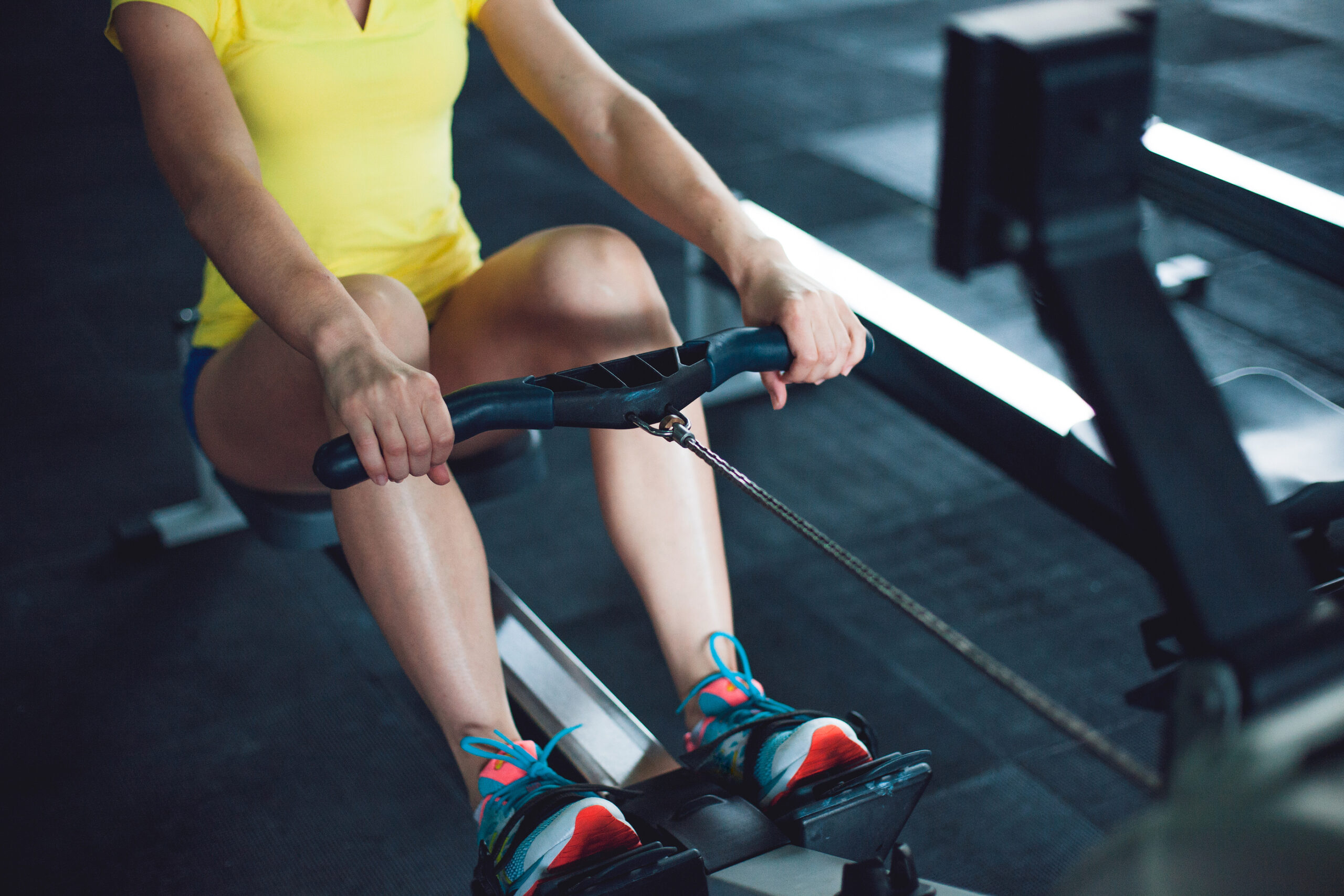Recumbent cross trainers are ideal for seniors looking for a low-impact, full-body workout from the comfort of home.
These machines offer joint-friendly exercise, making them perfect for aging adults with arthritis or mobility issues.
And with adjustable resistances and included handles for your arms, they can provide a great workout too.
And now that there are plenty of great home models to choose from, seniors don’t have to go to a commercial gym or rehab facility to use these exercise machines.
But before you decide to invest in one, it’s a good idea to know what to look for – and that’s where I can help.
In this comprehensive guide, we’ll go over the top recumbent cross trainers available, but we’ll also discuss all the important specs and features seniors should look for when deciding.
After reading, seniors and caregivers will know everything they need to in order to find the right cross trainer to meet their needs.
| Swivel Seat | Adjustable Back | Resistance | Price | |
| #1 Teeter LT7 | No | Yes | 20 levels | $ |
| #2 NuStep T4r | Yes | No | 10 levels | $$$ |
| #3 Spirit CRS800S | Yes | Yes | 20 levels | $$$ |
| #4 Inspire CS3 | No | Yes | 40 levels | $$ |
| #5 Teeter LT1 | No | Yes | 13 levels | $ |
Recumbent Cross Trainers vs Recumbent Bikes
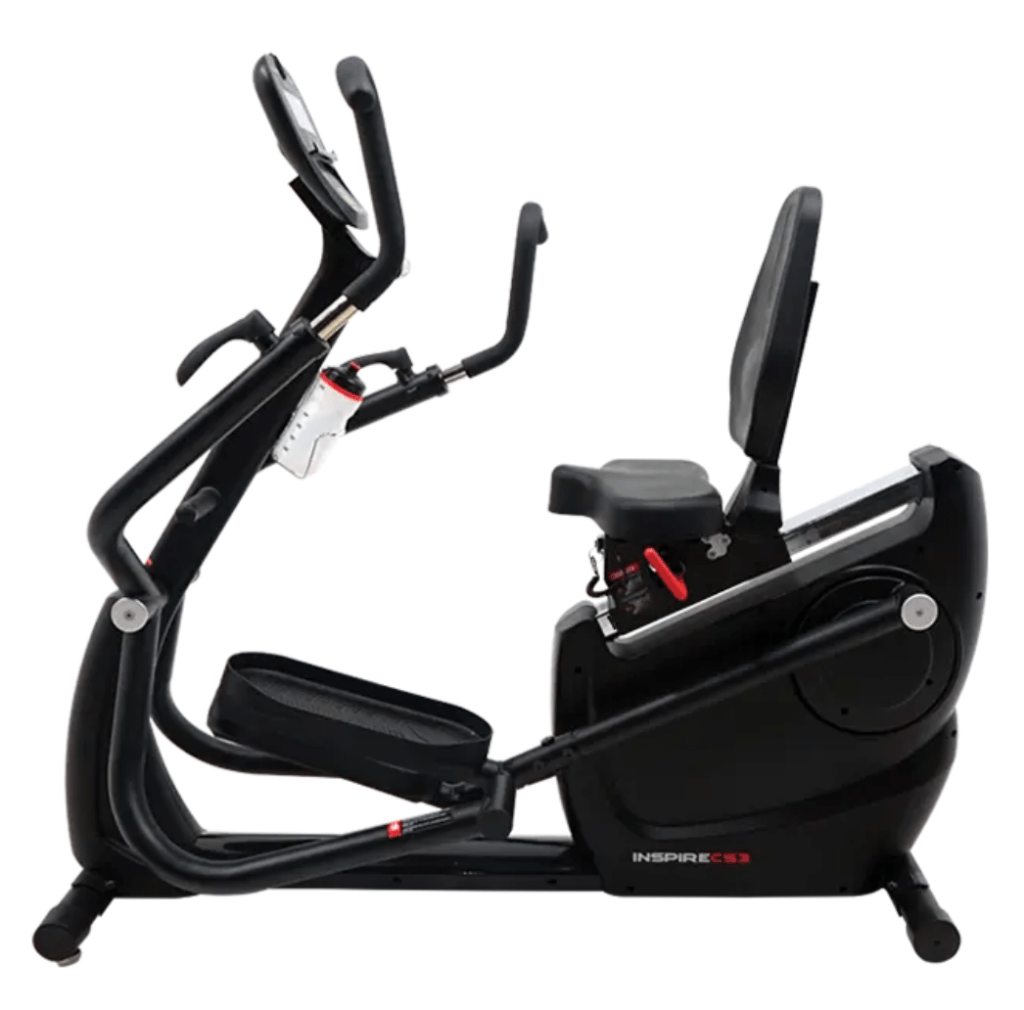
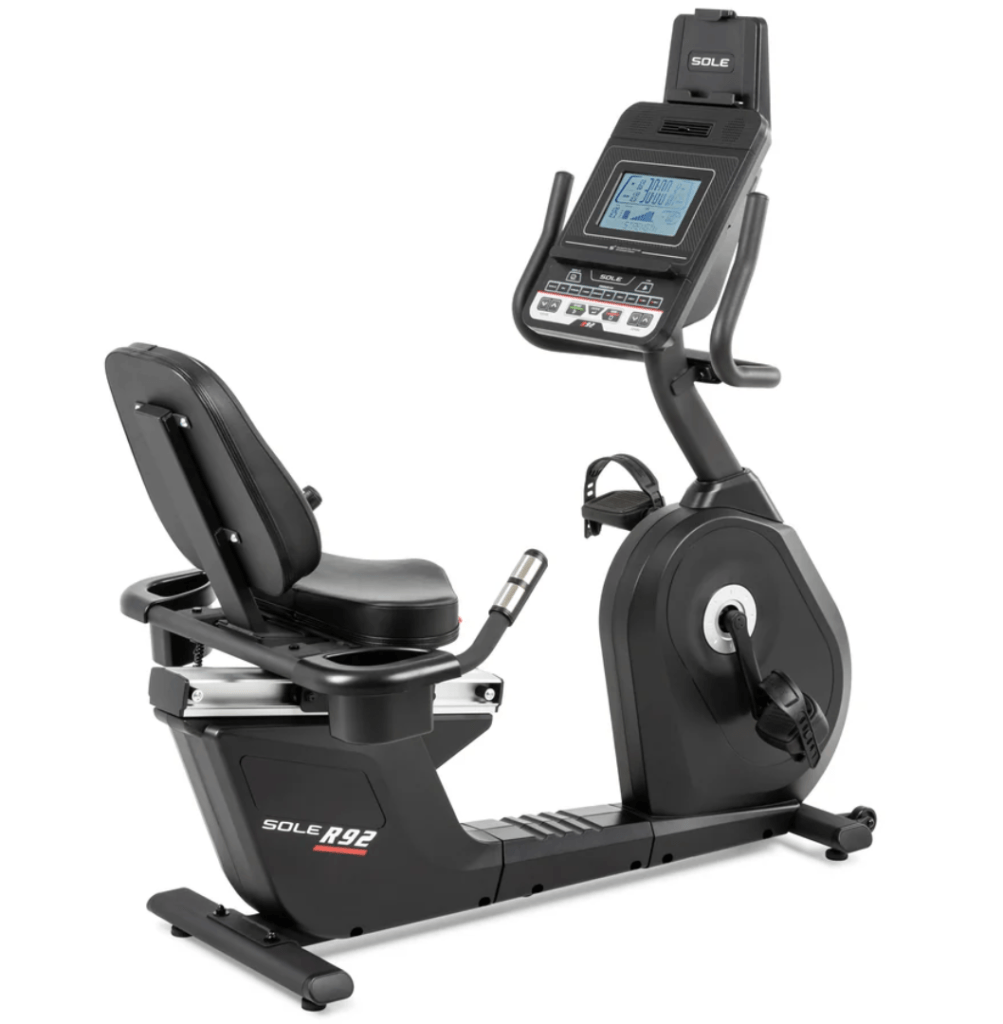
Before we get too deep here, I want to make sure we’re all talking about the same thing.
In this guide, we’ll be talking specifically about recumbent cross trainers, not recumbent bikes.
And even though they sound similar, these are two different types of exercise machines.
Both machines allow you to sit comfortably in a reclined (recumbent) position, but the pedaling motions and features found on these devices are different.
Specifically, recumbent cross trainers use a more linear pedaling motion and come with moving arm handles, while recumbent bikes use a traditional circular pedaling motion and don’t come with moving handles.
Recumbent cross trainers also tend to come with more mobility features, like reclining backrests and rotating seats (swivel) for easier access.
But these features vary quite a bit from trainer to trainer.
Both cardio machines offer low impact exercise for seniors, but with its linear pedaling motion, recumbent cross trainers are lower impact than recumbent bikes.
This makes recumbent cross trainers the best option for seniors with really stiff or achy joints – which is why these machines are found in so many rehab and assisted living facilities.
Oh, recumbent cross trainers tend to cost a bit more than recumbent bikes too.
So, Why Choose a Recumbent Cross Trainer?
Low Impact
Seniors may choose a recumbent cross trainer for home use because it offers a comfortable, low-impact way to stay active while protecting their joints.
With a reclined seat and full back support, these machines are designed to reduce strain on the lower back, hips, and knees.
And the low-impact stepping motion of the pedals makes them a safer option for those with arthritis or chronic pain.
Full-Body Workout
Recumbent cross trainers can also provide a full-body workout, engaging both the upper and lower body while allowing seniors to remain seated.
This not only helps build cardiovascular endurance, but also helps strengthens muscles.
Having the ability to work your arms and legs at the same time is one of the biggest differences between recumbent cross trainers and recumbent bikes.
Comfortable Design
Reclined seats with back support allow for comfortable positioning and longer workouts than some other types of cardio machines.
Some trainers also come with swiveling seats for easier access for seniors with mobility issues.
Top 5 Recumbent Cross Trainers for Seniors
#1 Teeter’s FreeStep LT7 Recumbent Cross Trainer
Key Features:
- 21 lb flywheel
- 20 resistance levels
- Adjustable back rest
- Adjustable handles
- 21 workout programs
Teeter has been offering affordable recumbent cross trainers for years and the LT7 is their newest, highest-end model to date.
The LT7 comes with some key upgrades over their highly-popular LT3, but with an asking price just over $1000, it’s still a lot more affordable than most recumbent cross trainers.
Anyway, the LT7 comes with a 21 lb flywheel and 20 levels of magnetic resistance, allowing it to provide a smooth pedaling motion while giving seniors a lot of control over the intensity of their workouts.
The large, textured pedals make for a comfortable workout and the 3-way adjustable back recline helps ensure everyone can find a comfortable workout position.
I also like that the handles can be adjusted to help target different muscle groups.
And seniors looking for some nice console features will appreciate the 9″ screen that comes with over 20 workout programs, bluetooth capabilities, and a USB charging port.
The LT7 is also surprisingly heavy-duty for a trainer in this price range: it can accommodate folks weighing up to 350 lb and up to 6’4″ tall.
Teeter could offer a longer warranty (only 3 year frame, 2 year parts), but otherwise, it’s unlikely you’re going to find a better cross trainer in this price range.
Highly recommended for seniors looking for a comfy trainer that won’t break the budget.
#2 NuStep T4r Recumbent Cross Trainer
Key Features:
- Swivel seat
- 10 resistance levels
- User-controlled step length
- Adjustable handles
- Comes fully assembled
Ok, so there is no world where I would consider the LT7 a better cross trainer than NuStep’s T4r.
The only reason I ranked the T4r in the #2 spot is because with a cost of well over $4000, it’s going to be outside a lot of seniors’ budgets… and budget is a key factor when it comes to choosing the right equipment.
But if you have the budget and are truly looking for one of the best recumbent cross trainers on the planet, then NuStep’s T4r is certainly worth cosidering.
FYI, NuStep created the first recumbent cross trainer and their trainers are still found in many rehab facilities to this day.
Anyway, the T4r is NuStep’s most affordable model and is designed for in-home use.
This trainer comes with 10 resistance levels and a comfy stride that lets you choose how far you extend your leg with each step.
The back rest isn’t adjustable on the T4r, but it does come with a swivel seat for easy access and the arm rests are easily adjustable as well.
The stride lock feature also helps improve safety with getting on/off, ensuring your feet won’t accidentally push down on a moving pedal.
The T4r is also quite robust and can fit most seniors weighing up to 400 lb or up to 6’4″ tall.
The only downside here is the cost, there’s no denying the T4r isn’t cheap. But if you’re looking for a commercial grade trainer that’s built to last, it could be worth the investment.
#3 Spirit’s CRS800S Recumbent Stepper
Key Features:
- Swivel seat
- 20 resistance levels
- User-controlled step length
- Adjustable, multi-grip handles
- Adjustable back rest
- Amazing warranty
Spirit is another great fitness brand and their CRS800S Recumbent Stepper is right there with NuStep’s T4r.
This stepper actually comes with very similar features and a similar price, although they differ quite a bit in terms of style.
Personally, I think the T4r looks a bit more ‘rehabby’, while the CRS800S looks more like something you’d see in a commercial gym.
That said, I’ve been seeing the CRS800S in a lot of apartment complex gyms and senior-living community gyms lately.
Regardless, the CRS800S is another top of the line recumbent trainer with a lot of great features.
This model comes with a swivel seat, an adjustable angle backrest, and over-sized pedals for added comfort and access.
The multi-grip handles are also easy to adjust and I really like how many grip options they offer.
The CRS800S uses a similar custom step range as the T4r, allowing you to extend the pedal as far as you like (up to 12.5″) with each stroke.
And with 20 levels of smooth magnetic resistance, this trainer offers a lot of control over workouts.
This is another really heavy-duty machine that can handle users up to 6’6″ tall and weighing up to 450 lb.
Oh, and Spirit offers some of the best warranties out there – with a lifetime frame, 10 year parts, and 2 year labor guarantee, you won’t have to worry about this machine breaking down.
The biggest downside here again is the price, but if you’re looking for an elite trainer that should last forever, it’s one of the best options out there.
#4 Inspire’s CS3 Cardio Strider

Key Features:
- 40 levels of resistance
- Adjustable back rest
- 10 workout programs
- Great warranty
Inspire Fitness has become one of my favorite fitness brands over the years and even though they’re known mostly for their home gyms, they’ve got a great recumbent cross trainer here.
The CS3 doesn’t come with anything too out of the ordinary – it’s just really well-built.
It’s also priced pretty well for home use, usually costing around $2600.
In terms of performance, this trainer comes with 40 resistance levels, giving seniors a lot of wiggle room when it comes to adjusting the intensity of their workouts.
I also like that it comes with an easily adjustable seat with 3 different recline positions to choose from.
The pedals are spacious, but the moving handles are a little basic – it would be nice to see multi-grip handles here, but at least they’re easily adjustable.
The console on the CS3 is pretty straightforward, but it does come with 10 built-in workout programs and is bluetooth compatible with heart rate monitors.
One of the stand out features here though is certainly the warranty – with a lifetime frame, 5 year parts, and 1 year labor guarantee, this trainer is built to last.
Overall, I could see the CS3 being a good choice for seniors looking for a straightforward cross trainer with a great warranty.
#5 Teeter’s LT3 Recumbent Cross Trainer
Key Features:
- 13 resistance levels
- Adjustable back rest
- Adjustable handles
- Great price
The LT3 is Teeter’s mid-range cross trainer (used to be their top end model before the LT7 arrived) and it has a lot to offer for the price.
Speaking of which, at roughly $750, the LT3 is about $400 cheaper than the LT7 mentioned earlier.
So, seniors who like the LT7 but are looking to spend a little less, may want to consider this option.
The LT3 doesn’t come with as many bells and whistles as the LT7, but it’s still a good deal for the cost.
This trainer comes with 13 resistance levels and a much lighter flywheel (7 lb), but it still comes with a multi-position back rest.
The console on the LT3 is smaller and more basic as well – it doesn’t come with bluetooth or built-in workouts, but it makes it easy to track your basic metrics during workouts.
This cross trainer can fit most users between 4’11” – 6’6″ and comes with a 300 lb weight limit, both of which are impressive for such an affordable machine.
Overall, the LT3 is a stripped down version of the LT7, but I could see it making a great choice for seniors looking for an affordable trainer that’s easy to use.
What To Look For When Comparing Recumbent Cross Trainers
The above trainers represent what I would consider the best options this year has to offer for seniors, but it’s a good idea to know how to compare trainers yourself.
You know, just in case none of the above options meet your needs (or you’re stuck between two similar models).
Here are some of the specs and features I encourage you to check before making a decision on any trainer:
Comfort and Ergonomics
First and foremost, a recumbent trainer should be easy to access and comfortable to use during workouts.
All trainers should come with similar step-thru frames, so instead, it’s a good idea to check for things like:
- Swivel seats
- Adjustable back rests
- Multi-grip handles
These features aren’t necessary for a great workout, but they can certainly make the cardio machine easier to access and more comfortable to use.
Performance
If you’re simply looking for a low-impact machine to get your joints moving, this may not be as important, but it’s still a good idea to check out the performance specs.
And when I say ‘performance specs’, I’m really talking about the flywheel weight and the number of resistance levels.
Generally speaking, having a heavier flywheel is beneficial because it usually makes for a smoother pedaling motion.
What’s heavy enough to get the job done?
That a tough one to answer, but anything over 15 lb is usually pretty good.
That said, higher-end cross trainers often have more sophisticated resistance systems and don’t have to rely on a heavy flywheel to create a smooth feel.
With these nicer trainers, you may not see a flywheel weight mentioned.
And when it comes to resistance levels, having more is always a good thing because it gives you more control over the intensity of your workouts.
Just know that having more resistance levels doesn’t necessarily mean you get more overall resistance – it just means you can make smaller adjustments to the resistance that’s available.
Size & Weight Limit
If your floor space is limited, you’ll definitely want to double check the physical dimensions for any trainer you’re considering to make sure it’ll fit in your home.
Your average recumbent cross trainer takes up a floor space of roughly 5′ x 3′, so fortunately, they don’t take up a ton of space.
It’s a good idea to check those weight limits as well.
Most importantly, you want to make sure any prospect can safely hold your weight, but seeing higher weight limits is usually an indicator of superior build quality.
Programs and Features
Many modern recumbent cross trainers include pre-set workout programs and tracking features, such as heart rate monitors and calorie counters.
These features can help track progress and keep seniors motivated, which is always nice.
Other features to look for include:
- Bluetooth
- USB charging
- Water bottle holders
- Media racks
Warranty
Personally, I’m a stickler for a good warranty – seeing a generous guarantee just warms my heart.
But in all seriousness, it’s a good idea to know how long your trainer is covered in case the worst case scenario happens.
Warranty length usually corresponds with cost, with more expensive trainers coming with longer warranties (and vice-versa).
For example, high-end trainers may come with lifetime frame and 5-10 year parts warranties, while more affordable options may only offer a couple years.
Budget
Recumbent cross trainers come in a range of prices, from basic models to more advanced options with a variety of features.
Identify your must-have features and set a budget accordingly.
More expensive models may come with additional comforts like better adjustability, programs, or enhanced stability.
Final Thoughts
Recumbent cross trainers have become the cardio machine of choice for many rehab and assisted living facilities because they offer such a safe workout experience for seniors.
They’re great because they can provide seniors with a safe, effective, and low-impact way to stay active.
They also offer the perfect combination of cardio and strength training, all while minimizing strain on joints and supporting mobility.
The models mentioned above are among the best options available, designed with seniors’ needs in mind to help maintain physical health and overall well-being.
When choosing the right machine, consider factors like performance specs, available features, and warranties.
And of course budget always plays an important role in the decision making process.
Anyway, I hope you found this guide helpful and if you have any questions (or know of any great trainers that deserve a spot on this list) just leave ’em below and I’ll get back to you soon.
